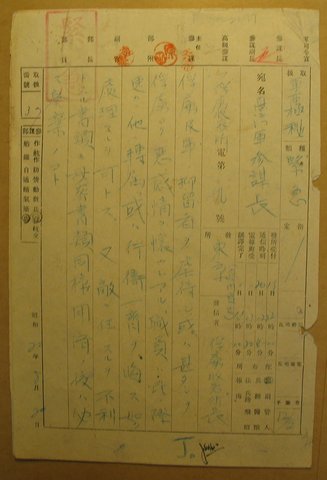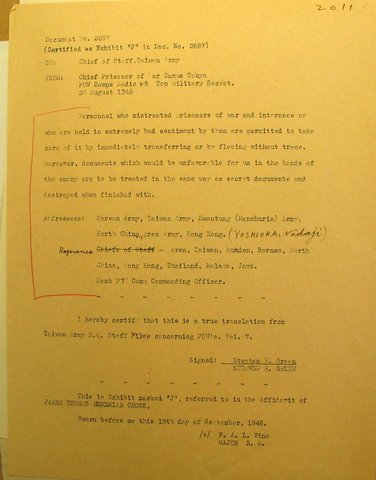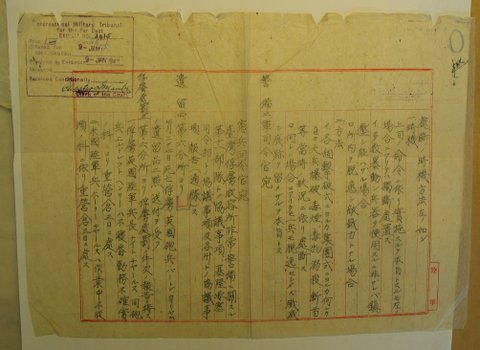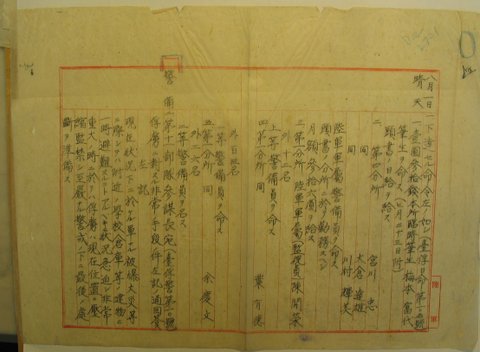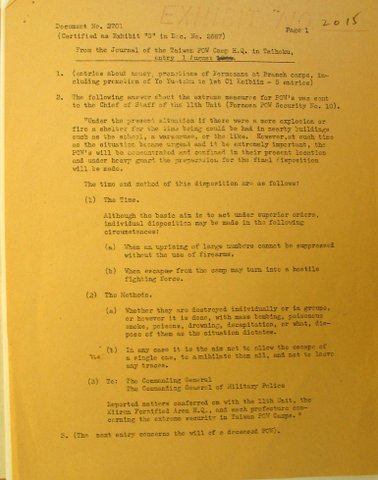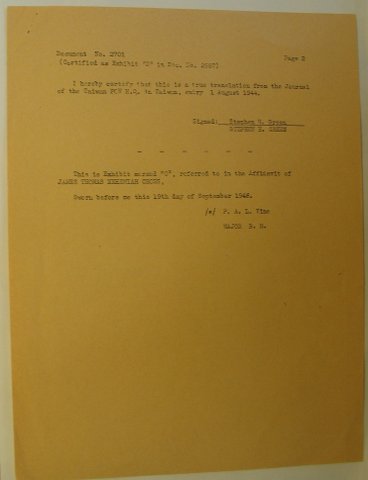From the NARA files
Courtesy of the late Roger Mansell, Founder of the Center for Research, Allied POWs under the Japanese.
More than a half-century after the end of World War II, the demand for information to fill in many of the missing details of that era remains strong. Although a huge body of information has become available, including wartime and post-war military and diplomatic records, much information held by U.S. intelligence agencies that could shed new light on events of the World War II remains classified.
For several years, it has been one of the special concerns of the National Archives and Records Administration (NARA) to work with other agencies in the federal government to meet the demand for more information about Nazi war crimes and those who committed them. This has been done through our chairmanship of the Nazi War Crimes (NWC) and Japanese Imperial Government Records Interagency Working Group (IWG). The IWG has a simple mandate: Declassify as much as possible the remaining classified U.S. government records about war criminals and crimes committed by the Nazis and their allies, specifically the Japanese, during World War II.
IWG’s authority is derived from two acts of Congress: the Nazi War Crimes Disclosure Act of 1998 and the Japanese Imperial Government Disclosure Act of 2000, which confirmed that “declassification of documents pertaining to Japanese war crimes is among IWG responsibilities.” (Quote from Declassifying the Secrets of War Crimes by John W. Carlin, Organization of American Historians)
Among the papers that survived the fire at the headquarters of the Japanese Imperial Army in Taiwan — a fire that was set intentionally at the time of surrender in order to destroy all evidence — were top-secret military documents that were declassified only recently. Among them, two documents pertain specifically to the internees in the Philippines and the Dutch East Indies. They are Document No. 2697, certified as Exhibit J in Doc. No. 2687, the Order telling guards to flee to avoid prosecution for war crimes. The other, designated Document No. 2710, certified as Exhibit O, was the Order to kill all the POWs.
The Foreign Relations of the U.S. (FRUS)
The Liquidation Plan of the Japanese can be found in official sources, in the Chapter Malta-Yalta, the places where conferences were held before the end of the war. The order to the Kenpetai, the commander of the military police in Taiwan, was meant as a safety precaution for the Japanese. On Page 5 it states: N.B. The Japanese had plans to murder all prisoners starting in September of 1945.
| Exhibit J — The order authorizing brutal guards and commanders to flee to avoid prosecution. Source: NARA, War Crimes, Japan, RG 24, Box 2011 |
|
 Page One of authorization for Guards to flee because of mistreatment of POWs. Page One of authorization for Guards to flee because of mistreatment of POWs.Dated 20 Aug 1945, 5 days after the surrender. Click on image to enlarge. |
Translation of Exhibit J
Complete text as submitted for trial. |
 Page Two of authorization for Guards to flee because of mistreatment of POWs Page Two of authorization for Guards to flee because of mistreatment of POWsDated 20 Aug 1945, 5 days after the surrender. Click on image to enlarge. |
|
| Doc 2701, Exhibit O — The order to murder all the POWs Source: NARA, War Crimes, Japan, RG 24, Box 2015 Some claim the author of this “policy memorandum” from the war ministry did not have the authority to issue such an order, but the memorandum was transmitted to every POW Command and POW prison camp commander. Other documents in this same file prove that commanders had solicited from all commands suggestions for “methods to dispose of the POWS” in the preceding months. |
|
 Page 1 of the War Ministry’s order for the disposition (murder) of all POWs. Click on image to enlarge. Page 1 of the War Ministry’s order for the disposition (murder) of all POWs. Click on image to enlarge.Date of order: 1 Aug 1944 |
Translation of Exhibit O
Applicable text as submitted for trial. |
 Page 2 of the War Ministry’s order for the disposition (murder) of all POWs. Click on image to enlarge. Page 2 of the War Ministry’s order for the disposition (murder) of all POWs. Click on image to enlarge.Date of order: 1 Aug 1944 |
|
These are the original documents and their translation:
| Exhibit J
Exhibit J Translation
Exhibit O, Page 1
Exhibit O, Page 2
Exhibit O, Page 1 Translation
Exhibit O, Page 2 Translation
|
These documents clearly indicate that the POWS’ and Internees’ execution dates were set before the atomic bombs were dropped and that the Japanese had plans to murder all prisoners starting in September of 1945. “Methods to dispose of the POWS” had been solicited from all commands in the preceding months.
Return to the top of the page.

